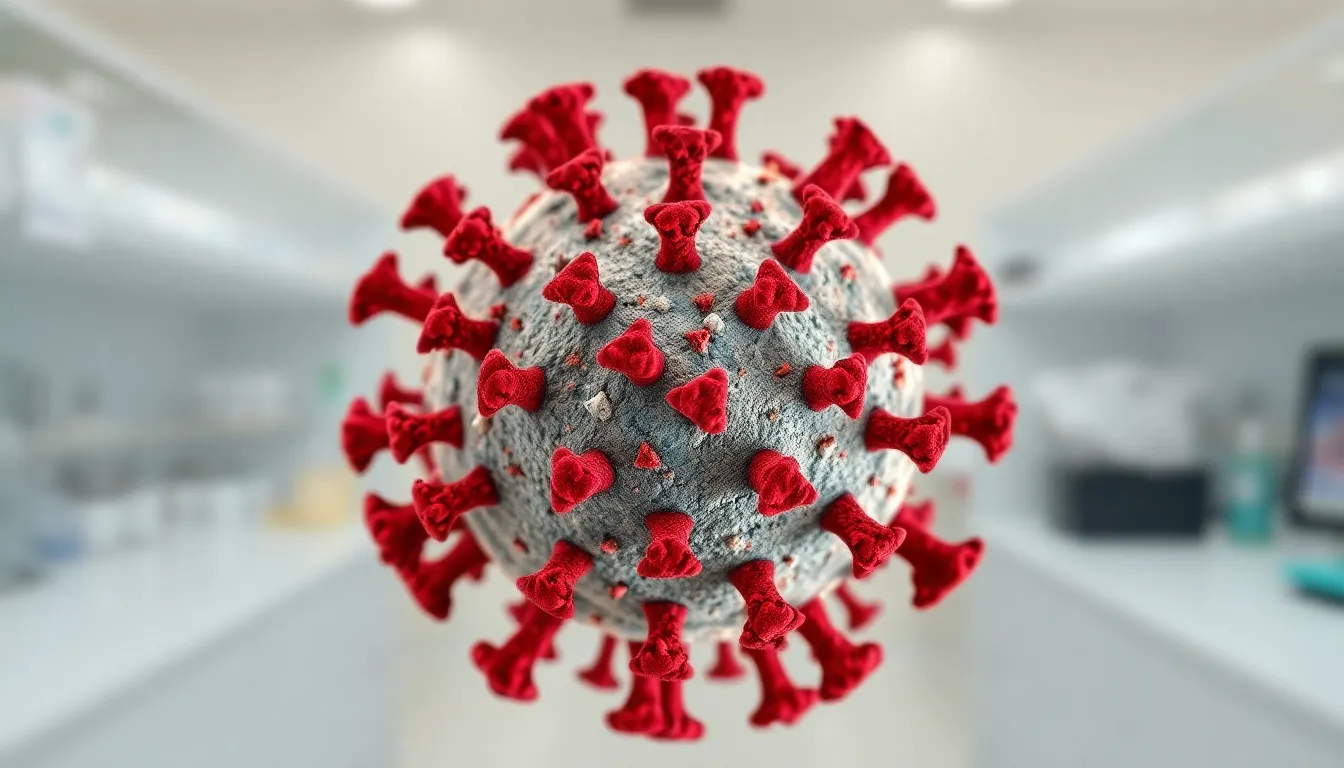When COVID-19 burst onto the scene, it didn’t just bring a virus; it threw a curveball at the entire healthcare system. This novel coronavirus quickly became the ultimate test for critical care professionals, challenging them like never before. Imagine juggling flaming swords while riding a unicycle—welcome to the world of intensive care during a pandemic!
COVID-19: A Novel Coronavirus and Critical Care’s Unprecedented Challenge
Covid-19, caused by the novel coronavirus SARS-CoV-2, emerged in late 2019 and quickly escalated into a global pandemic. This virus spreads primarily through respiratory droplets, affecting primarily the respiratory system but also impacting multiple organ systems. Symptoms range from mild respiratory issues to severe pneumonia and complications, leading to significant mortality, particularly among vulnerable populations.
As of October 2023, the World Health Organization (WHO) reported over 700 million confirmed cases worldwide, with more than 6.8 million deaths attributed to the virus. Critical care units have faced unprecedented demands, necessitating rapid adaptations in protocols and resource management. Healthcare providers, confronted with rising patient loads, implemented new strategies to triage care effectively.
Treatment for Covid-19 varies based on the severity of the disease. For mild cases, supportive care is often sufficient, while severe cases may require intensive interventions, such as mechanical ventilation or extracorporeal membrane oxygenation (ECMO). Vaccination emerged as a crucial preventive measure, with multiple vaccines receiving emergency use authorization globally.
Research continues to evolve regarding the virus’s variants. Variants, such as Delta and Omicron, have shown increased transmissibility and potential resistance to immunity. These developments necessitate ongoing vigilance and adaptability in treatment approaches and public health measures.
Overall, Covid-19 presents continuous challenges for critical care units and healthcare professionals. Understanding its evolving nature is vital for effective pandemic response. Adaptation and resilience remain at the forefront of efforts to mitigate its impact.
Pathophysiology of Covid-19

COVID-19 significantly disrupts normal physiological functions, primarily through its effects on the respiratory system and other organ systems.
Virus Structure and Transmission
SARS-CoV-2, the virus responsible for COVID-19, exhibits a crown-like structure due to spikes on its surface. These spike proteins enable binding to human cells by attaching to the ACE2 receptor. Infection primarily occurs through respiratory droplets expelled during coughing, sneezing, or talking. Airborne transmission can also take place in enclosed environments. Consequently, close contact with an infected person increases the risk of transmission. Environmental surfaces can harbor the virus, contributing to indirect spread. Understanding this structure and transmission mechanism is crucial for implementing control measures.
Immune Response
Upon infection, the human immune system initiates a cascade of responses. Innate immune cells, such as macrophages, detect the virus and release inflammatory cytokines. This initial reaction aims to contain the virus but can lead to a cytokine storm if uncontrolled. Adaptive immunity activates approximately one to two weeks after infection. This process involves the production of antibodies and the activation of T-cells, which help clear the infection. Although some patients develop immunity, varying immune responses contribute to differences in disease severity. Immunological memory can be compromised by emerging variants.
Impact on Critical Care
COVID-19 significantly impacted critical care environments, presenting unique challenges to healthcare providers. The pandemic created unprecedented demands for resources and altered patient management strategies.
Increased Demand for Resources
During the pandemic, hospitals faced surging patient volumes, resulting in increased demand for critical care resources. Staffing shortages emerged as healthcare workers faced burnout, needing additional support. Equipment shortages also became common, particularly for ventilators and personal protective equipment. According to the WHO, the global need for ICU beds surpassed available capacity, straining healthcare systems. Resource allocation strategies adapted, emphasizing equitable distribution and prioritization based on patient acuity. These measures aimed to ensure that the most vulnerable patients received essential care amid overwhelming demands.
Challenges in Patient Management
Patient management in critical care settings became increasingly complex due to COVID-19’s diverse clinical presentations. Symptoms varied widely, complicating diagnostic protocols and treatment plans. Patients with severe cases often required advanced interventions like mechanical ventilation or ECMO, creating resource challenges. Identifying and managing co-morbidities proved vital, as many patients presented with underlying health issues. Ongoing updates to treatment guidelines necessitated continuous education for healthcare professionals. Adapting to new variants further complicated these dynamics, requiring vigilance and flexibility in care approaches to address evolving patient needs effectively.
Treatment Strategies
Treatment strategies for COVID-19 have evolved significantly since the onset of the pandemic. Effective management strategies encompass both pharmacological interventions and supportive care techniques.
Pharmacological Interventions
Antiviral medications play a crucial role in managing COVID-19. Remdesivir, an FDA-approved antiviral, has demonstrated efficacy in shortening recovery time among hospitalized patients. Corticosteroids, notably dexamethasone, effectively reduce mortality in severe cases by dampening the hyperactive immune response. Monoclonal antibodies, such as Bamlanivimab and Casirivimab/Imdevimab, target the virus directly and help prevent severe illness. Emerging therapies continue to receive investigation, with ongoing trials exploring combinations and novel agents to enhance treatment outcomes. Data indicates that timely intervention significantly improves patient prognoses.
Supportive Care Techniques
Supportive care techniques are essential for optimal patient recovery in critical settings. Oxygen therapy remains a fundamental component, providing relief for patients with hypoxemia. Non-invasive ventilation methods, like CPAP and BiPAP, assist in maintaining oxygenation without the need for intubation. Fluid management strategies ensure patients remain hemodynamically stable while preventing complications. Furthermore, multidisciplinary teams tailor approaches to individual needs, enhancing overall care. Continual assessment and adjustment of these supportive measures guarantee effective management of COVID-19.
Future Directions in Critical Care
Critical care faces significant changes as the healthcare community adapts to ongoing challenges posed by COVID-19. Innovations and improvements will play vital roles in ensuring effective responses to similar crises in the future.
Research and Development
Research continues to focus on understanding the long-term effects of COVID-19 and improving patient outcomes. Clinical trials are underway to assess new antiviral agents and therapies. Collaborations between academic institutions and pharmaceutical companies yield promising results in therapeutic effectiveness. Moreover, understanding the virus’s mutations enhances vaccine development, ensuring effectiveness against emerging variants. Continued investment in research infrastructure strengthens the ability to respond to future health emergencies.
Preparedness for Future Pandemics
Preparedness plans must adapt lessons learned from COVID-19 to build resilient healthcare systems. Training programs prioritize rapid response capabilities, including resource allocation and staffing strategies. Engaging healthcare professionals in ongoing education empowers them to manage surges effectively. Additionally, establishing stockpiles of critical supplies enhances responsiveness during emergent crises. Policymakers should emphasize inter-agency collaborations to streamline communication and coordination across healthcare sectors. These strategies ensure a more agile response to any future pandemics.
Conclusion
The COVID-19 pandemic has reshaped the landscape of critical care, presenting unprecedented challenges that demand resilience and adaptability. As healthcare professionals navigate the complexities of patient management and resource allocation, the lessons learned during this crisis will be vital for future preparedness.
Innovations in treatment strategies and ongoing research will play a crucial role in enhancing patient outcomes. The commitment to continuous education and collaboration among healthcare teams will ensure that critical care units remain equipped to tackle evolving challenges.
Ultimately, the experiences gained from this pandemic will guide the healthcare system in building a more robust and responsive framework for any future health crises.















